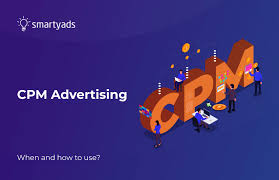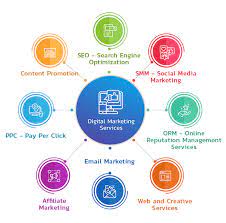Understanding CPM Online Advertising
CPM, or Cost Per Mille, is a common pricing model used in online advertising. It refers to the cost an advertiser pays for one thousand impressions of their ad. In other words, CPM is a way for advertisers to measure the cost of reaching a thousand potential customers.
CPM advertising is often used in display advertising, where ads are shown on websites or mobile apps. Advertisers pay a fixed rate for every thousand times their ad is displayed to users, regardless of how many clicks or conversions it generates.
One of the key benefits of CPM advertising is that it allows advertisers to increase brand awareness by reaching a large audience. Since advertisers pay based on impressions rather than clicks, CPM can be a cost-effective way to get their message in front of potential customers.
However, one challenge with CPM advertising is ensuring that the ad is seen by the right audience. Without targeting capabilities, advertisers may end up paying for impressions that do not result in any meaningful engagement.
To maximise the effectiveness of CPM campaigns, advertisers can use targeting options such as demographics, interests, and behaviour to reach a more relevant audience. This helps increase the chances of generating clicks and conversions from the impressions served.
In conclusion, CPM online advertising offers advertisers a way to reach a broad audience and increase brand visibility. By combining targeted strategies with CPM pricing, advertisers can make the most of their online advertising budget and drive better results for their campaigns.
Top 9 Benefits of CPM Online Advertising for Brand Visibility and Cost Efficiency
- Cost-effective pricing model based on impressions rather than clicks.
- Allows advertisers to reach a large audience and increase brand visibility.
- Helps in building brand awareness by displaying ads to a wide range of users.
- Provides predictable costs as advertisers pay for a fixed number of impressions.
- Can be used for general brand promotion without the need for immediate conversions.
- Offers flexibility in ad placement on various websites and platforms.
- Enables easy comparison of campaign performance with clear metrics based on impressions.
- Suitable for campaigns focused on increasing website traffic or overall exposure.
- Can be combined with targeting options to reach specific audiences based on demographics or interests.
Challenges and Drawbacks of CPM Online Advertising
- Limited control over who sees the ad due to broad targeting
- Risk of paying for impressions that do not lead to clicks or conversions
- Difficulty in measuring ROI compared to performance-based models
- Potential for ad fatigue as users see the same ad multiple times
- Ad visibility may be low if placed on less prominent areas of websites or apps
- Competitive bidding can drive up CPM costs, making it less cost-effective
Cost-effective pricing model based on impressions rather than clicks.
One of the key advantages of CPM online advertising is its cost-effective pricing model, which is based on impressions rather than clicks. This means that advertisers pay for the number of times their ad is displayed to users, regardless of how many clicks it generates. By focusing on impressions, advertisers can increase brand visibility and reach a larger audience without having to pay for each individual interaction. This makes CPM advertising a budget-friendly option for businesses looking to boost their online presence and increase brand awareness efficiently.
Allows advertisers to reach a large audience and increase brand visibility.
One of the key advantages of CPM online advertising is that it enables advertisers to reach a vast audience and enhance brand visibility. By paying for impressions rather than clicks, advertisers can showcase their ads to a wide range of potential customers, increasing the likelihood of their brand being seen and recognised. This broad exposure helps in building brand awareness and establishing a strong presence in the digital landscape, ultimately contributing to long-term brand growth and recognition.
Helps in building brand awareness by displaying ads to a wide range of users.
CPM online advertising offers a significant advantage by aiding in the establishment of brand awareness through the display of ads to a diverse audience. By showcasing ads to a wide range of users, advertisers can effectively increase the visibility of their brand and message. This exposure to a broad audience helps in creating brand recognition and familiarity among potential customers, ultimately contributing to building a strong brand presence in the digital space.
Provides predictable costs as advertisers pay for a fixed number of impressions.
One advantage of CPM online advertising is that it provides predictable costs for advertisers as they pay for a fixed number of impressions. This means that advertisers can accurately budget and plan their campaigns based on the expected cost per thousand impressions. By knowing the exact cost upfront, advertisers can better manage their advertising expenses and make informed decisions about their marketing strategies. This predictability in costs allows advertisers to have greater control over their budget allocation and ensures transparency in the pricing of their online advertising campaigns.
Can be used for general brand promotion without the need for immediate conversions.
One of the key advantages of CPM online advertising is its ability to be utilised for general brand promotion without the necessity for immediate conversions. Advertisers can leverage CPM pricing to increase brand visibility and awareness by reaching a wide audience through displaying their ads multiple times. This approach allows businesses to focus on building brand recognition and establishing a presence in the market, rather than solely aiming for immediate sales or conversions. By using CPM advertising for brand promotion, companies can create a lasting impression on consumers and enhance their overall brand image over time.
Offers flexibility in ad placement on various websites and platforms.
One of the key advantages of CPM online advertising is its flexibility in ad placement across a wide range of websites and platforms. Advertisers have the freedom to choose where their ads are displayed, allowing them to target specific audiences or reach a broader demographic. This flexibility enables advertisers to explore different channels and placements to maximise their reach and engagement, ultimately increasing the effectiveness of their advertising campaigns.
Enables easy comparison of campaign performance with clear metrics based on impressions.
One of the key advantages of CPM online advertising is that it enables easy comparison of campaign performance through clear metrics based on impressions. Advertisers can quickly assess the effectiveness of their campaigns by analysing the number of impressions their ads receive. This straightforward metric allows advertisers to gauge the reach and visibility of their ads, making it simpler to track and compare performance across different campaigns. By having a clear understanding of impression-based metrics, advertisers can make informed decisions to optimise their campaigns for better results.
Suitable for campaigns focused on increasing website traffic or overall exposure.
CPM online advertising is particularly advantageous for campaigns that aim to boost website traffic or enhance overall exposure. With CPM pricing, advertisers can efficiently reach a large audience and increase brand visibility by paying for ad impressions rather than clicks. This means that businesses looking to drive more visitors to their websites or enhance their online presence can benefit from CPM advertising as it offers a cost-effective way to expand their reach and attract potential customers. By utilising CPM campaigns, businesses can effectively promote their products or services to a broader audience and achieve their goals of increasing website traffic and overall exposure.
Can be combined with targeting options to reach specific audiences based on demographics or interests.
One of the key advantages of CPM online advertising is its flexibility to be combined with targeting options, allowing advertisers to reach specific audiences based on demographics or interests. By utilising targeting capabilities, advertisers can ensure that their ads are shown to the most relevant audience, increasing the likelihood of engagement and conversions. This targeted approach not only enhances the effectiveness of CPM campaigns but also helps advertisers maximise their return on investment by reaching the right people with their message.
Limited control over who sees the ad due to broad targeting
One significant drawback of CPM online advertising is the limited control over who sees the ad due to broad targeting. With CPM pricing, advertisers pay for impressions based on the number of times their ad is displayed, regardless of whether it reaches their target audience. This lack of precision in targeting can result in ads being shown to a wide range of users who may not be interested in the product or service being advertised. As a result, advertisers may end up paying for impressions that do not lead to meaningful engagement or conversions, impacting the overall effectiveness and ROI of their advertising campaigns.
Risk of paying for impressions that do not lead to clicks or conversions
One significant drawback of CPM online advertising is the risk of paying for impressions that do not translate into clicks or conversions. Advertisers may end up investing in a large number of ad views without seeing any tangible return on investment in terms of user engagement or conversions. This inefficiency can result in wasted advertising budget and reduced overall campaign effectiveness, highlighting the importance of implementing targeted strategies to ensure that impressions are reaching a relevant audience more likely to take action.
Difficulty in measuring ROI compared to performance-based models
One significant drawback of CPM online advertising is the challenge it poses in measuring Return on Investment (ROI) compared to performance-based models. With CPM, advertisers pay based on the number of impressions their ad receives, rather than actual clicks or conversions. This lack of direct correlation between cost and tangible outcomes makes it difficult for advertisers to accurately assess the effectiveness and profitability of their campaigns. Unlike performance-based models like CPC (Cost Per Click) or CPA (Cost Per Acquisition), where ROI can be more easily tracked and optimised, CPM advertising requires careful monitoring and analysis to ensure that the investment yields desirable results.
Potential for ad fatigue as users see the same ad multiple times
One significant drawback of CPM online advertising is the potential for ad fatigue among users who are repeatedly exposed to the same ad multiple times. When users see the same ad over and over again, it can lead to a decrease in engagement and effectiveness of the campaign. Ad fatigue may result in users ignoring the ad altogether, becoming annoyed by its presence, or developing a negative perception of the advertised brand. This can ultimately lead to wasted impressions and reduced ROI for advertisers as their message fails to resonate with the target audience due to overexposure.
Ad visibility may be low if placed on less prominent areas of websites or apps
An inherent drawback of CPM online advertising is that ad visibility may suffer when placed in less prominent areas of websites or apps. In such cases, ads are more likely to be overlooked or ignored by users, leading to lower engagement and potential wastage of advertising budget. Advertisers must carefully consider placement options to ensure their ads are displayed in highly visible positions that maximise the chances of capturing the audience’s attention and driving desired actions.
Competitive bidding can drive up CPM costs, making it less cost-effective
In the realm of CPM online advertising, a notable drawback arises from competitive bidding, which has the potential to inflate CPM costs significantly. As advertisers vie for ad space and audience attention, the competitive nature of bidding can drive up prices, ultimately diminishing the cost-effectiveness of CPM campaigns. This increased competition can lead to higher CPM rates, making it more challenging for advertisers to achieve their desired return on investment and potentially limiting the reach of their campaigns within budget constraints.



